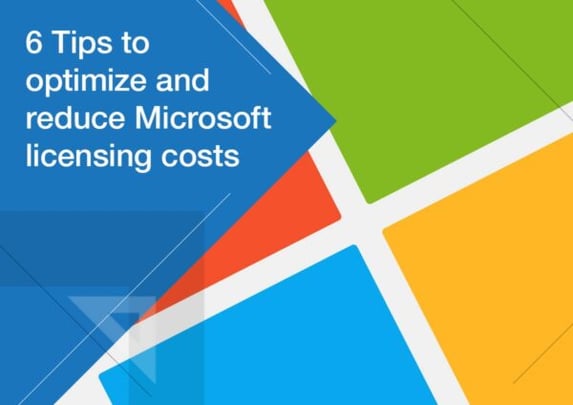In today’s tech-driven business landscape, managing software licensing costs is a critical aspect of maintaining a healthy bottom line. Microsoft, being a major player in the software industry, is a significant contributor to many organizations’ expenses. However, with the right strategies and tools in place, you can gain control of, optimize, and reduce your Microsoft licensing costs. In this blog, we’ll explore six essential tips to help you achieve this goal.
- Open Your Eyes to Visibility
One of the most significant challenges in managing Microsoft licensing costs is the lack of visibility into license counts, usage, and associated expenses. Many organizations find themselves with a significant number of unused or underutilized licenses across their IT estate. The key to reducing this unnecessary expense is gaining access to the right data. Without it, these hidden costs persist.
- Optimize, Don’t Overspend
Buying licenses as a knee-jerk reaction to ensure coverage for all team members can be costly. Understanding license usage is often a manual process, requiring custom usage reports generated by central IT. This disconnect between visibility and cost ownership dilutes the urgency of cost-saving efforts. Uncovering unused licenses that could be redeployed is a key step in optimizing your licensing costs.
- Mitigating Unforeseen Expenses
Over-licensing issues often come to light during annual true-up processes or Enterprise License Agreement (ELA) renewals. At these junctures, departments and business units are commonly shocked by the rising costs. Without visibility, organizations cannot reclaim licenses that aren’t being utilized, leading to unnecessary expense.
- Identify and Eliminate Bad Practice
Publisher’s license management systems typically focus on reporting basic usage data. This partial data falls short in revealing over-provisioned users, or users engaging in practices that incur additional costs under usage-based license models. Identifying and rectifying these practices is crucial for cost optimization.
- Eliminate Over Provisioning and Right-Size Entitlements
Many organizations find themselves in a reactive mode, assigning high-level licenses by default or maintaining a uniform set of licenses with little variance. Access to detailed user activity and usage reports can help eliminate over-provisioning and ensure that users have the right level of licenses for their needs. This includes identifying when users require only limited access to certain applications.
- Actively Upgrade or Downgrade Licenses
License optimization isn’t just about reducing licenses. It’s also about ensuring that users fully utilize the licenses they have to their maximum potential. Training users to make the most of their paid-for applications can significantly boost productivity. Alongside, identifying cases where low-level licenses should be upgraded can also contribute to cost optimization.
The Proactive Approach is the Smart Way to Go
To optimize and reduce Microsoft licensing costs effectively, proactive management is key. By using active usage metering and creating standards for assigning licenses, organizations can avoid carrying unused licenses and control costs. Regular updates and alerts keep IT and business units informed, avoiding surprises during true-ups or ELA renewals.
In conclusion, optimizing and reducing Microsoft licensing costs is achievable with the right strategies and tools in place. Gain visibility, eliminate unnecessary expenses, and proactively manage licenses to ensure that your organization gets the most value from its Microsoft investments. With these tips, you can control costs and allocate resources more efficiently, ultimately boosting your organization’s financial health.
Get Detailed, Actionable License Insights and Dashboards
Accurate and detailed license usage analysis is essential for Enterprise License Agreement negotiations. Without granular data on application usage, IT leaders cannot right-size agreements with vendors effectively. Acumen’s software analytics dashboard provides the necessary details on active application usage, helping organizations make informed decisions during renewals.



